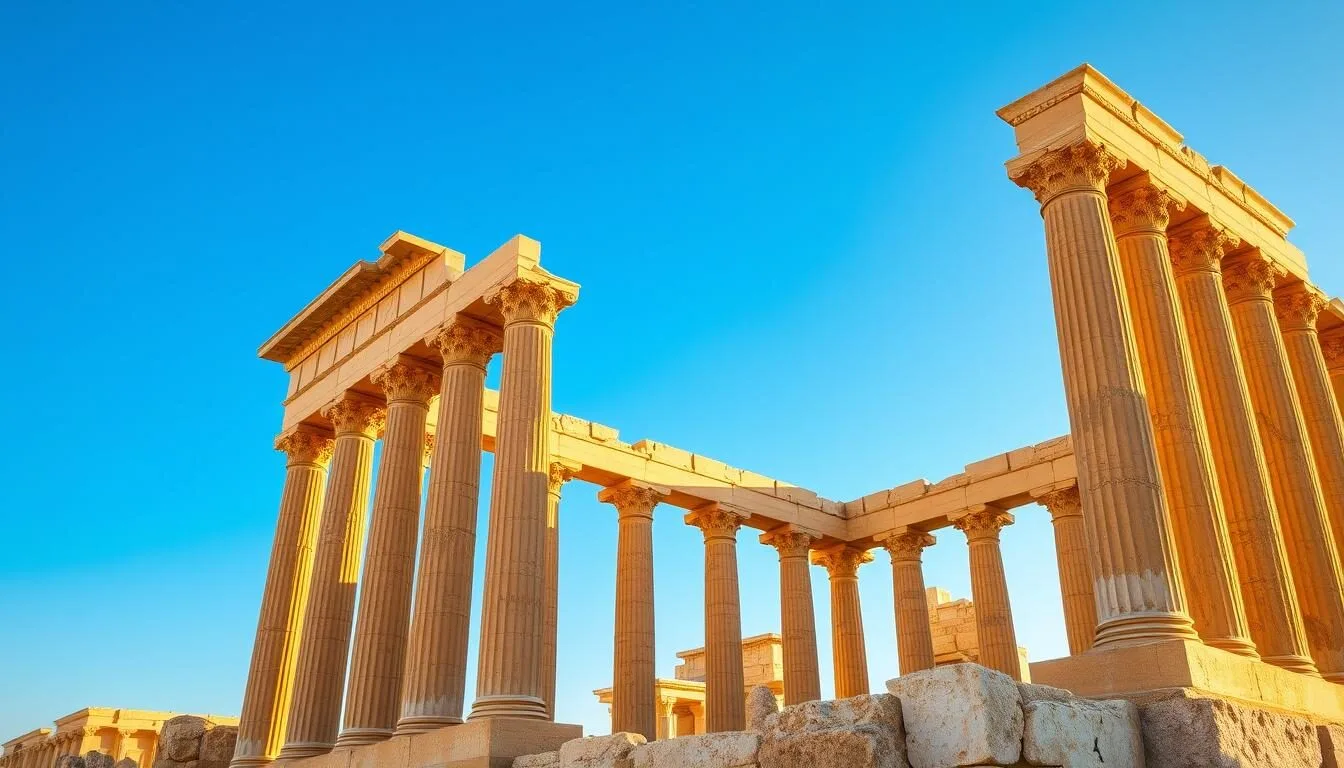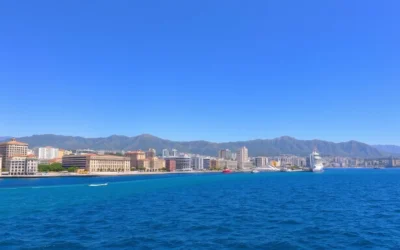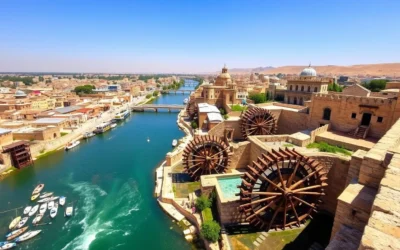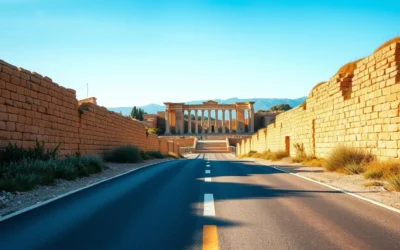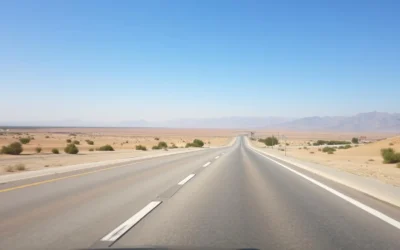Did you know that Syria is home to six UNESCO World Heritage Sites, including some of the world’s oldest continuously inhabited cities? Despite recent challenges, this ancient land continues to captivate travelers with its rich historical tapestry spanning over 10,000 years of human civilization. From the majestic ruins of Palmyra to the vibrant souks of Damascus, Syria offers a journey through time unlike any other destination on earth.
Planning Your Journey to Syria
Traveling to Syria requires careful planning and preparation. While tourism is gradually returning to certain regions, it’s essential to stay informed about the current situation and travel advisories. Most visitors enter Syria through Lebanon, as direct flights to Damascus remain limited.
The breathtaking ruins of Palmyra, one of Syria’s most iconic historical sites
Before planning your trip, check the latest travel advisories from your government. While many historical areas are now accessible, some regions remain off-limits. Working with a licensed Syrian tour operator is highly recommended, as they can help with visa arrangements and ensure a safe, well-organized experience.
Ready to Start Your Syrian Adventure?
Find the best flight deals to Beirut, Lebanon – the gateway to Syria.
Best Time to Visit Syria
The ideal time to visit Syria is during spring (March to June) and autumn (September to November) when temperatures are pleasant, ranging from 15°C to 25°C (59°F to 77°F). These seasons offer comfortable conditions for exploring historical sites and enjoying outdoor activities.
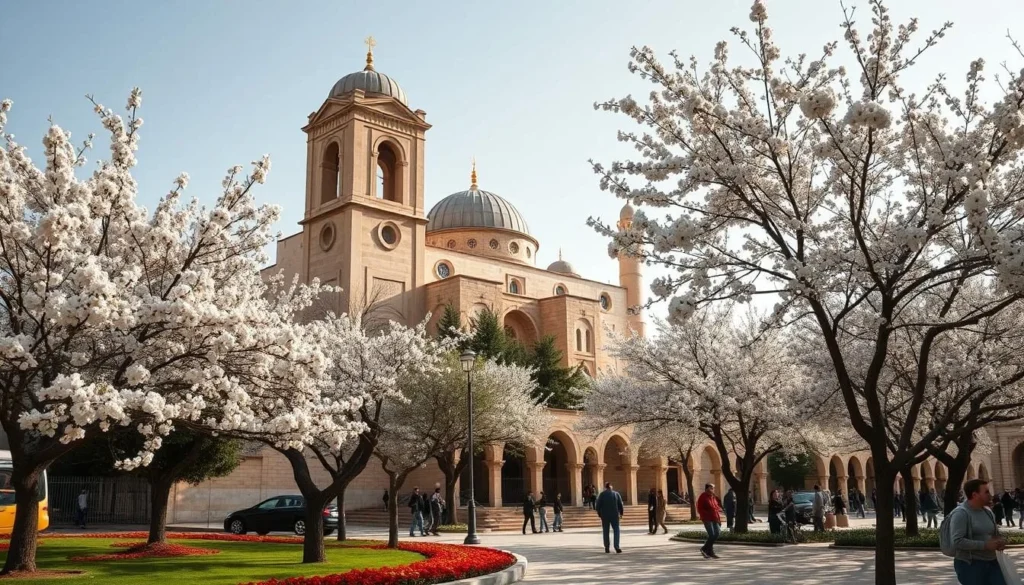
Spring in Damascus offers pleasant temperatures and beautiful blooming landscapes
Summer months (July and August) can be extremely hot, with temperatures reaching 40°C (104°F), making sightseeing challenging. Winter (December to February) brings cooler temperatures, occasional rainfall, and even snow in mountainous regions, but many sites remain accessible with fewer tourists.
| Season | Months | Temperature | Recommendation |
| Spring | March-June | 15-25°C (59-77°F) | Highly recommended – ideal weather |
| Summer | July-August | 30-40°C (86-104°F) | Not recommended – too hot |
| Autumn | September-November | 15-25°C (59-77°F) | Highly recommended – ideal weather |
| Winter | December-February | 5-15°C (41-59°F) | Good for budget travelers – fewer tourists |
How to Get to Syria
The most common route to Syria is through Beirut, Lebanon. After landing in Beirut, travelers typically arrange for ground transportation to the Lebanon-Syria border, followed by another vehicle to Damascus. The entire journey from Beirut to Damascus takes approximately 2.5-4 hours, depending on border procedures and traffic conditions.
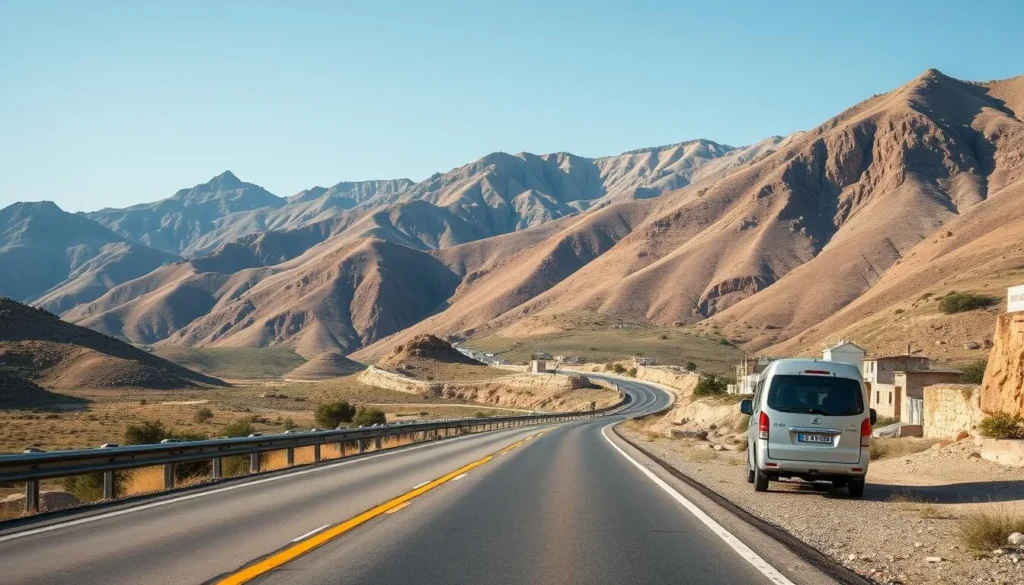
The scenic road journey from Beirut to Damascus offers beautiful mountain views
Working with a licensed tour operator is essential for this border crossing, as they can arrange all necessary transportation and assist with entry procedures. Most tour packages include this transfer service as part of their offering.
“The border crossing from Lebanon to Syria is straightforward when arranged through a reputable tour operator. They handle all the logistics, making the journey smooth and hassle-free.”
Where to Stay in Syria
Syria offers a range of accommodation options from historic boutique hotels to modern establishments. In Damascus, the Old Town area provides an authentic experience with traditional guesthouses and boutique hotels housed in restored historic buildings.
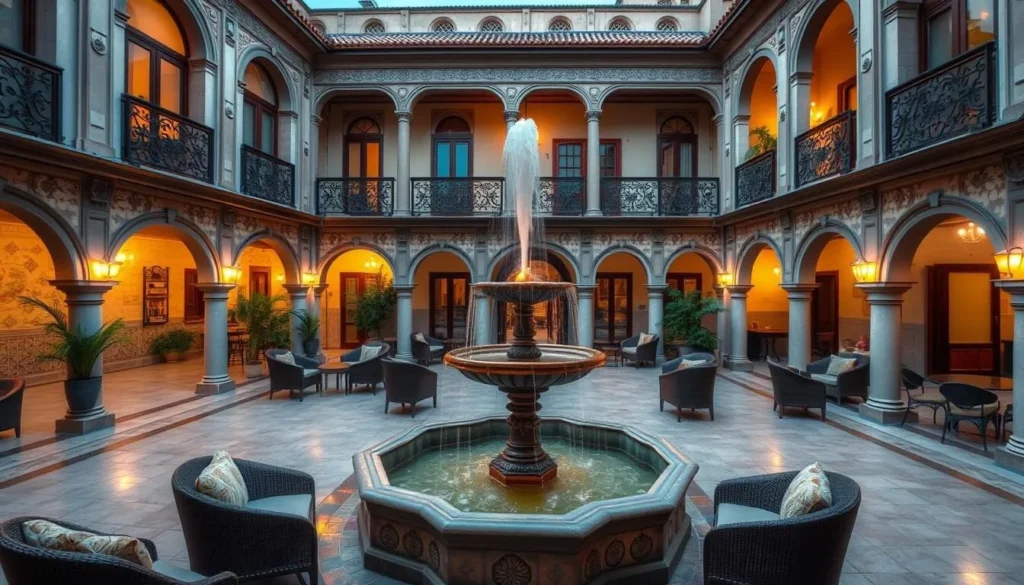
A traditional Damascus hotel with a beautiful central courtyard
For luxury travelers, international-standard hotels are available in major cities like Damascus and Aleppo. Budget travelers can find affordable guesthouses and hostels throughout the country, with prices ranging from $10-30 per night. Most tour operators can arrange accommodation based on your preferences and budget.
Find Your Perfect Stay in Syria
Browse accommodation options for your Syrian adventure.
Syria: Best Things to Do – Top Picks
Syria’s rich history and diverse landscapes offer countless experiences for travelers. Here are the must-visit attractions that showcase the best of this ancient land.
Explore the Old City of Damascus
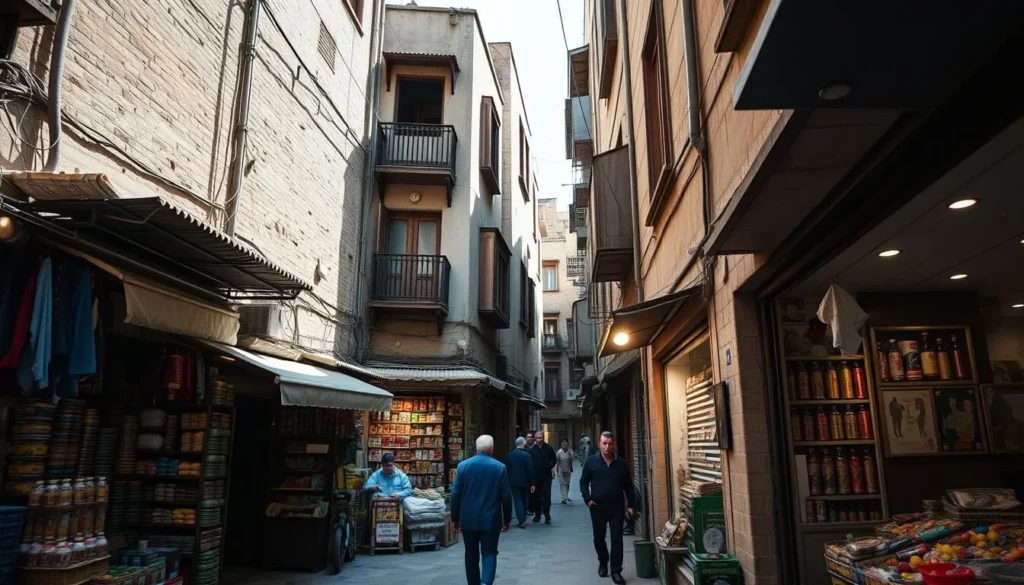
The enchanting narrow streets of Old Damascus, one of the world’s oldest continuously inhabited cities
Damascus claims to be the oldest continuously inhabited city in the world, with a history spanning over 4,000 years. The Old City is a UNESCO World Heritage site and a labyrinth of narrow streets, ancient buildings, and bustling souks. Don’t miss the Street Called Straight, mentioned in the Bible, and the many traditional houses with their beautiful courtyards hidden behind modest exteriors.
Visit the Umayyad Mosque
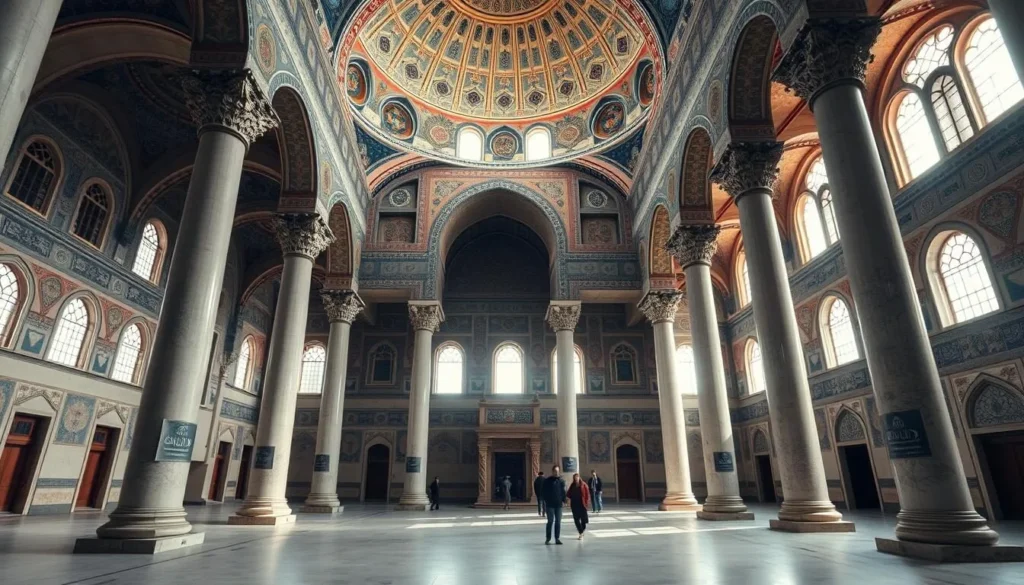
The magnificent Umayyad Mosque, one of the largest and oldest mosques in the world
The Umayyad Mosque in Damascus is one of the largest and oldest mosques in the world. Built in the 8th century, it’s renowned for its spectacular mosaics, vast courtyard, and religious significance to both Muslims and Christians. The mosque contains a shrine said to hold the head of John the Baptist, revered in both religions.
Marvel at the Ancient City of Palmyra
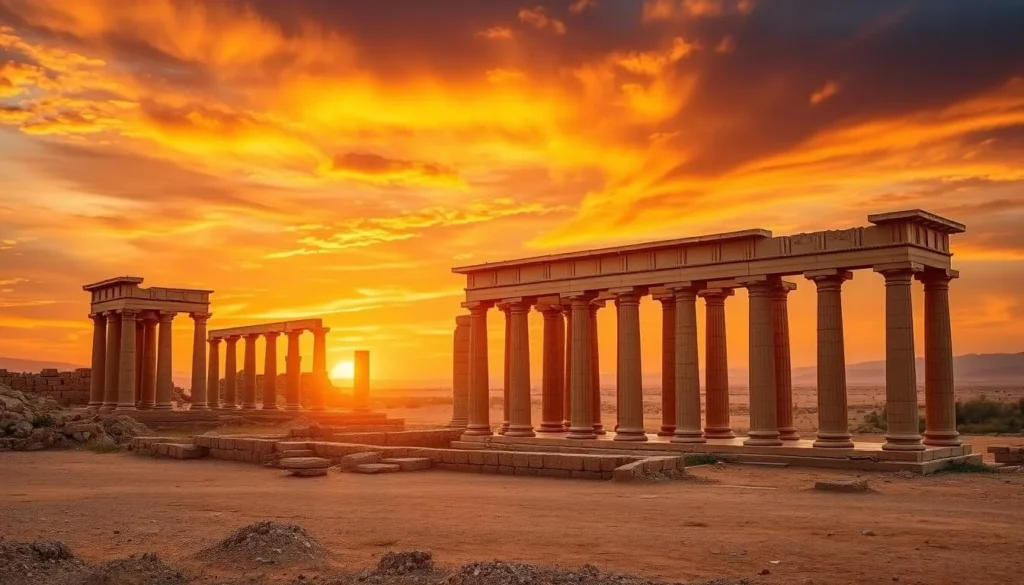
The majestic ruins of Palmyra at sunset, showcasing its ancient grandeur
Palmyra, known as the “Bride of the Desert,” was once a wealthy caravan city at the crossroads of several civilizations. Despite damage during recent conflicts, the site remains one of Syria’s most impressive archaeological treasures. The colonnaded streets, temples, and theater offer a glimpse into the city’s former glory as a vital link between the Roman Empire and the East.
Experience Syria’s Historical Wonders
Book guided tours and activities to make the most of your visit.
Discover Activities & Tours
Explore the Krak des Chevaliers
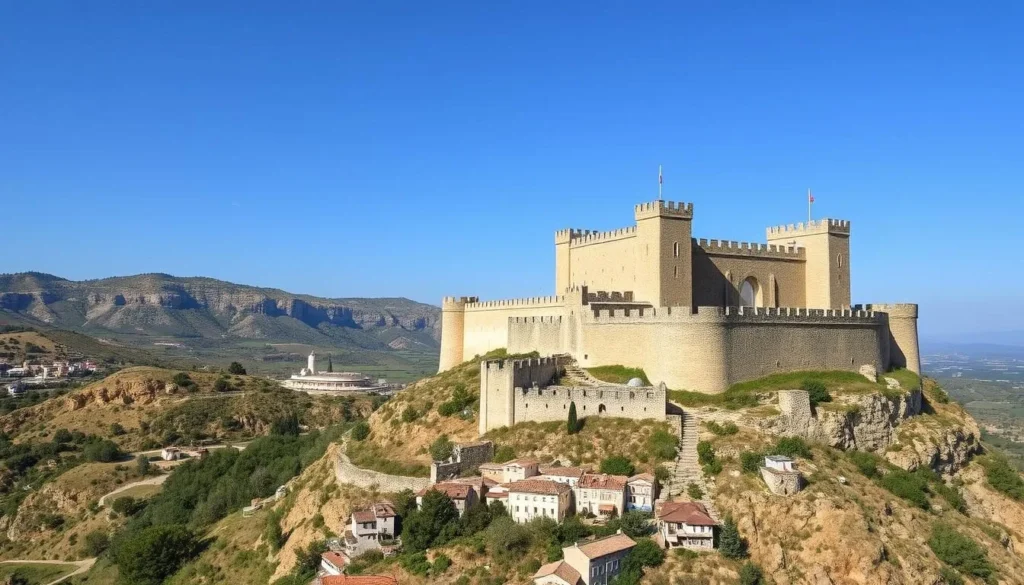
The imposing Krak des Chevaliers, considered one of the best-preserved medieval castles in the world
The Krak des Chevaliers is widely regarded as one of the most important preserved medieval castles in the world. This Crusader fortress sits atop a 650-meter-high hill and features impressive defensive architecture with massive walls and towers. Walking through its halls and climbing its ramparts offers both historical insights and spectacular views of the surrounding countryside.
Wander Through Aleppo’s Ancient Souks
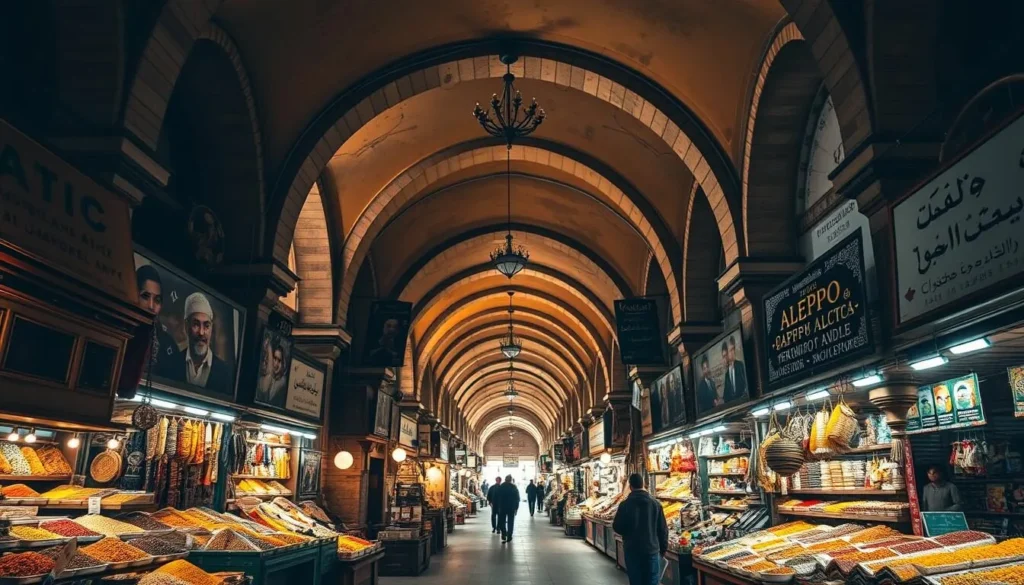
The historic covered souks of Aleppo, gradually being restored to their former glory
Aleppo’s Al-Madina Souq was once the largest covered market in the world. Though damaged during the conflict, restoration efforts are ongoing, and parts have reopened to visitors. These ancient marketplaces offer a glimpse into traditional Syrian commerce and craftsmanship, with sections dedicated to textiles, spices, soap, and metalwork.
Adventurous Activities in Syria
Beyond historical exploration, Syria offers opportunities for more active adventures across its diverse landscapes.
Hiking in the Anti-Lebanon Mountains
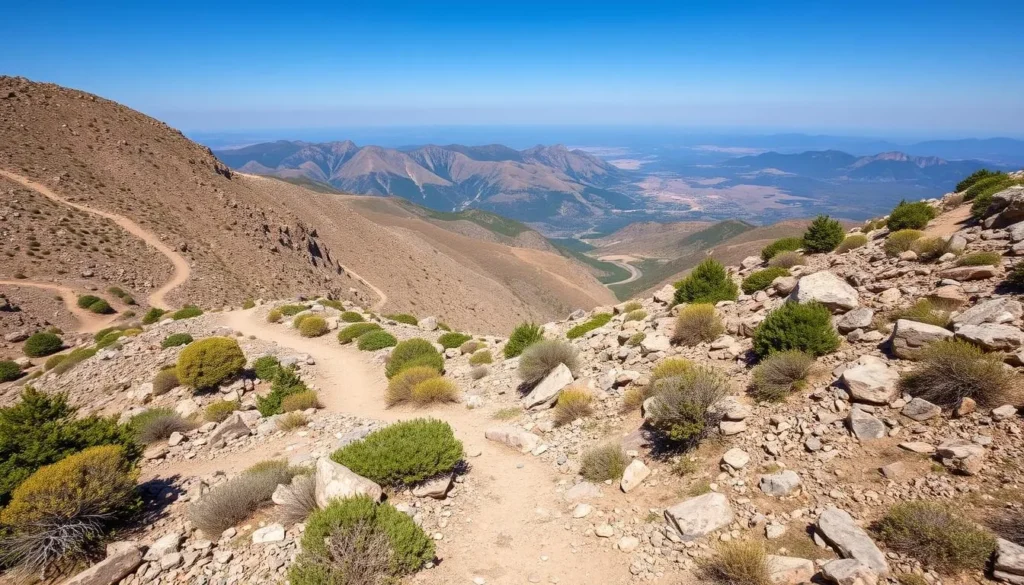
The rugged beauty of the Anti-Lebanon Mountains offers challenging hikes and spectacular views
The Anti-Lebanon Mountain range along the border with Lebanon provides excellent hiking opportunities with varying difficulty levels. Local guides can lead you through scenic trails with panoramic views of valleys and historic sites below. Spring is particularly beautiful when wildflowers bloom across the slopes.
Desert Safaris and Camping

Experience the magic of camping under the stars in the Syrian desert
The Syrian Desert offers a unique opportunity to experience traditional Bedouin culture through desert safaris and overnight camping. These excursions typically include camel rides, traditional meals, and the unforgettable experience of sleeping under the stars in a landscape virtually unchanged for millennia.
Water Sports on the Mediterranean Coast
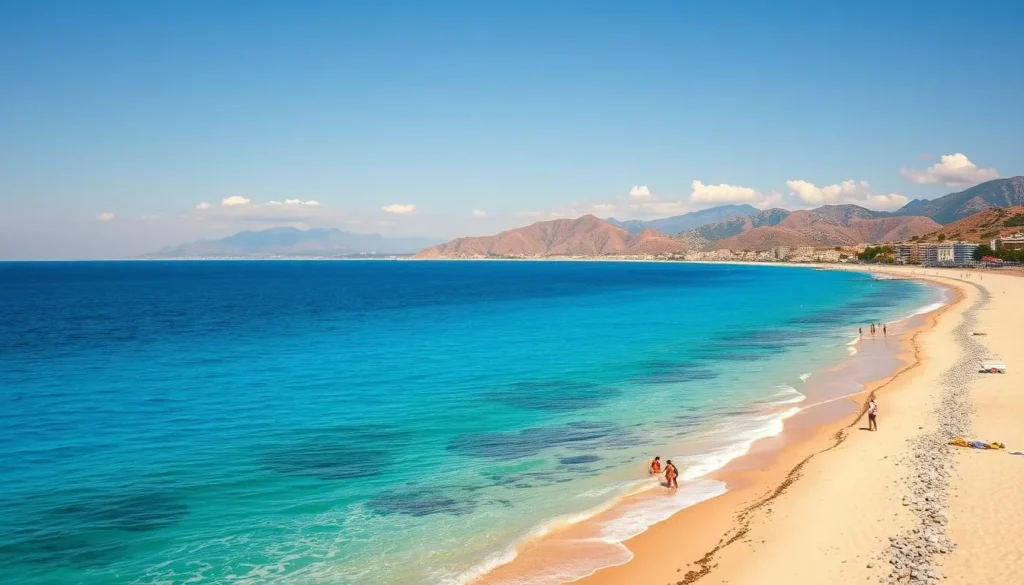
The beautiful Mediterranean coastline of Latakia offers various water sports and relaxation
Syria’s Mediterranean coastline around Latakia provides opportunities for swimming, snorkeling, and boating. The beaches here are less crowded than many other Mediterranean destinations, offering a more relaxed experience. Local operators offer equipment rental and guided excursions for water sports enthusiasts.
Explore Syria Your Way
Rent a car to discover Syria’s diverse landscapes at your own pace.
Syrian Culinary Experiences
Syrian cuisine is considered one of the most diverse and flavorful in the Middle East, with influences from throughout the region’s long history.
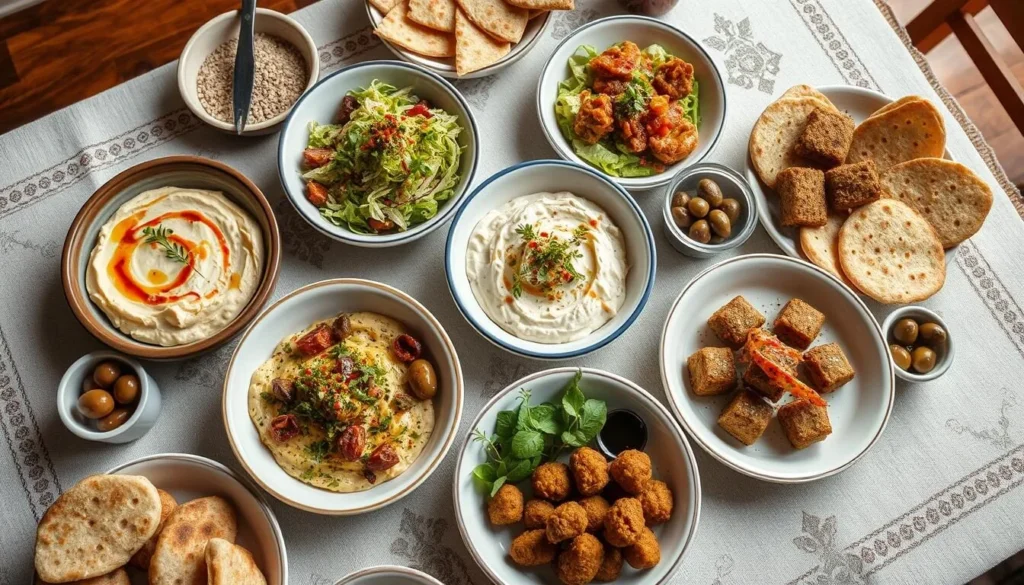
A traditional Syrian mezze spread featuring a variety of small dishes
Don’t miss trying a traditional mezze, a selection of small dishes served as appetizers. Popular options include hummus, baba ghanoush (eggplant dip), tabbouleh (parsley salad), and kibbeh (meat and bulgur wheat croquettes). For main courses, try shawarma, grilled meats, or yabrak (stuffed vine leaves).
Syrian sweets are famous throughout the Middle East. Baklava, layers of filo pastry filled with nuts and soaked in honey syrup, is a must-try. Also sample knafeh, a cheese pastry soaked in sweet syrup, and ma’amoul, shortbread pastries filled with dates or nuts.
“Syrian cuisine is a journey through history, with each dish telling a story of cultural exchange and culinary innovation that has evolved over thousands of years.”
Traditional cafés offer a chance to experience Syrian coffee culture. Try the thick, cardamom-spiced coffee served in small cups, often accompanied by sweet treats. Many cafés also serve aromatic teas and fresh fruit juices.
Practical Tips for Visiting Syria
Safety Information
While many tourist areas in Syria have stabilized, it’s essential to stay informed about current conditions. Travel with licensed tour operators who understand the security situation and can guide you safely. Avoid photography near military checkpoints or sensitive areas, and always follow your guide’s advice regarding restricted zones.
Always check your government’s travel advisories before planning your trip to Syria. Most countries currently advise against all or non-essential travel to certain regions.
Local Etiquette
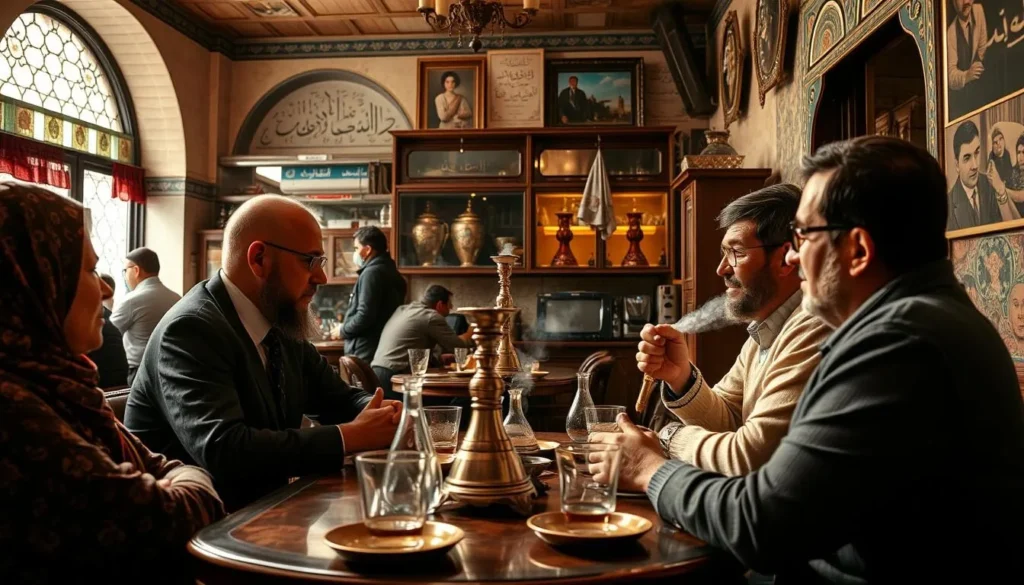
Locals enjoying traditional tea in a Damascus café
Syrians are known for their hospitality and warmth toward visitors. Dress modestly, especially when visiting religious sites – women should cover shoulders and knees, and in mosques, women should cover their hair. Remove shoes when entering homes or mosques. It’s polite to accept offers of tea or coffee when visiting shops or homes.
Basic Arabic Phrases
Learning a few basic Arabic phrases can enhance your experience and show respect for the local culture:
| Arabic | Pronunciation | English |
| مرحبا | Marhaba | Hello |
| شكرا | Shukran | Thank you |
| من فضلك | Min fadlak | Please |
| كيف حالك؟ | Kayfa haluka? | How are you? |
| لا أفهم | Ana laa afham | I don’t understand |
Money and Costs
Syria is an affordable destination for most international travelers. A traditional meal for 3-4 people costs around $15-20, while a simple sandwich might be $1-2. Souvenirs are inexpensive, often less than $1 each. Bring cash (US dollars or Euros) as international credit cards are not widely accepted, and exchange money through official channels or your tour operator.
Ready to Explore Syria’s Treasures?
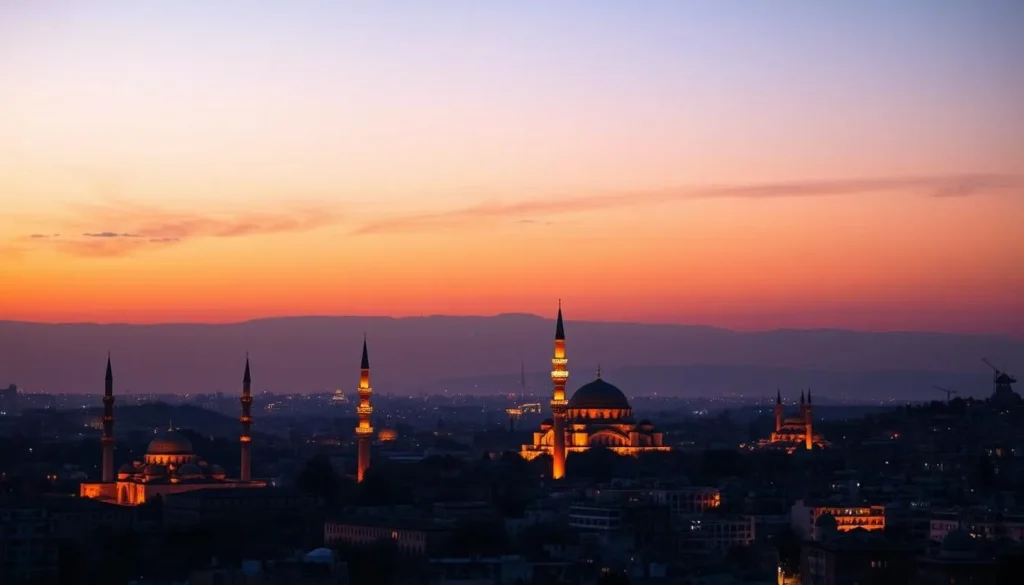
The magical skyline of Damascus at sunset
Syria stands as a testament to human civilization’s resilience and creativity. Despite recent challenges, its historical treasures, warm hospitality, and rich cultural tapestry continue to captivate travelers seeking authentic experiences. From wandering ancient streets that have witnessed millennia of history to savoring culinary traditions passed down through generations, a journey to Syria offers insights and memories that few other destinations can match.
As tourism gradually returns to this extraordinary land, visitors have a unique opportunity to experience its wonders with fewer crowds while contributing to the country’s recovery and preservation of its cultural heritage. With proper planning and respect for local customs, your Syrian adventure promises to be a journey of discovery that will stay with you long after you return home.
Begin Your Syrian Journey Today
Start planning your unforgettable adventure to one of the world’s most ancient civilizations.
Explore Activities
Frequently Asked Questions
Is it safe to travel to Syria in 2023?
Safety varies by region. Major tourist areas like Damascus, Aleppo’s central districts, and Latakia have stabilized significantly. However, travel should be arranged through licensed tour operators who understand current conditions. Always check your government’s travel advisories before planning your trip.
What is the best time of year to visit Syria?
Spring (March-June) and autumn (September-November) offer the most pleasant weather for sightseeing, with temperatures between 15-25°C (59-77°F). Summer can be extremely hot, while winter brings cooler temperatures and occasional rainfall.
How do I get a visa for Syria?
Most travelers need to arrange visas through a licensed Syrian tour operator who will sponsor your visit. The process typically takes 2-4 weeks. Your tour operator will provide specific requirements based on your nationality.
What should I wear when visiting Syria?
Modest clothing is recommended, especially when visiting religious sites. Women should cover shoulders and knees, and have a scarf for covering hair when entering mosques. Men should avoid shorts in religious areas. In major cities, dress codes are more relaxed but still conservative by Western standards.
The above is subject to change.
Check back often to TRAVEL.COM for the latest travel tips and deals.
